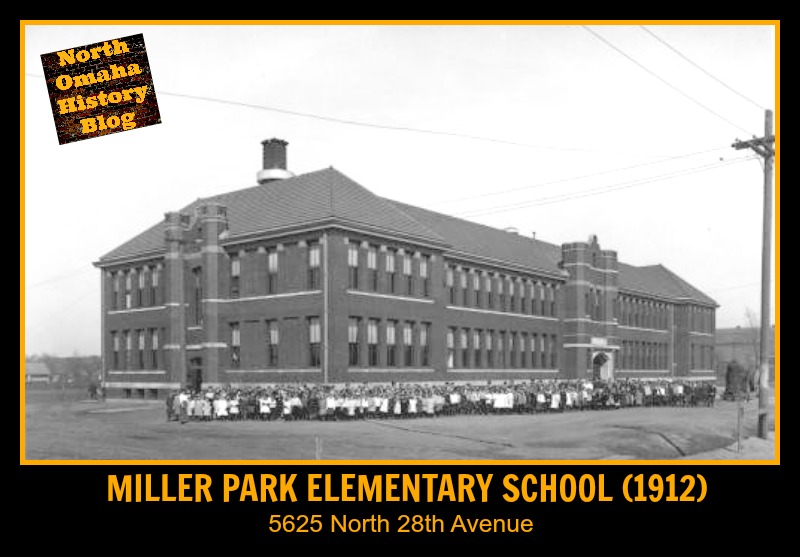While there are iconic places throughout North Omaha, some stand taller than all others. For more than 150 years, the Florence neighborhood has been home to one of these icons. This is a history of the Florence Mill.
Building a Mill

In 1846, 4,000 pioneers with the Church of Jesus Christ Latter Day Saints rolled into Indian Territory west of the Missouri River to establish a short-term encampment on the Florence Bench, a geographical plain rising next to the river. Cutting off that plain from the Ponca Hills was a small creek the pioneers knew they could use to water their lives. Within a month of arriving, the pioneers laid out a town called Winter Quarters with streets, cabins and houses, and a town square. In a project overseen by Mormon leader Brigham Young, they also built a grist mill for grinding their crops to make flour, and other purposes along Turkey Creek, which ran east to the river. After almost everyone left within a few years the Mormons abandoned or sold off all of their properties, including the mill.
For almost a decade, the US government waited before opening the Indian Territory for white settlers. Renaming the land west of the river as the Nebraska Territory, in 1854 it was opened, including the land that was once Winter Quarters.
That year, settlers were sold land and old buildings by James Mitchell, a real estate agent from Council Bluffs. One of the buildings was the old mill from Winter Quarters, which Mitchell took for himself. Rebuilding the mill on Turkey Creek and renaming the creek Mill Creek, Alexander Hunter bought it and in 1856, rebuilt the mill with some of the old lumber.
Around 1860, Jacob Weber bought the mill, and his family operated it for the next century. In 1965, the family sold it and the building fell into disrepair.
Historical Value

The center of a 1970’s plan, the mill was part of the planned Florence Historic Village. Meant to be designated as a national historic district, the village was supposed to include the Bank of Florence, Mormon Bridge Tollhouse, and other historic places in the former City of Florence. While the plans for the district fell through, the mill kept existing.
Located at 9102 North 30th Street in the modern Florence neighborhood, the Florence Mill was listed on the National Register of Historic Places in 1998. During the 1990s, a private owner bought and restored the mill, and it is now called the Winter Quarters Mill Museum and ArtLoft Gallery.
While the mill is listed on several tours and in promotional materials for the City of Omaha, today there is no designation for the Florence Historic District.
You Might Like…
MY ARTICLES ABOUT THE HISTORY OF FLORENCE
Public Places: Florence Main Street | Florence Ferry | Florence High School | The Mormon Tree | Florence Water Works | Mormon Bridge | Florence Boulevard | River Drive | J.J. Pershing Drive and Monument | Potter’s Field
Businesses: Bank of Florence | Florence Mill | Zesto
Houses: Parker Mansion | Brandeis Country Home | Lantry-Thompson Mansion | Mitchell House | Hunt Mansion
Other Historic Places: Cutler’s Park | Winter Quarters | Vennelyst Park | Florence Depot | Florence Home | Florence Building
People: James M. Parker | James Comey Mitchell | Florence Kilborn | Jacob Weber Sr.
Neighborhoods: Winter Quarters | Florence Field | Wyman Heights | High Point
Other: Directory of Florence Historic Places
- A History of Fur Trading in North Omaha
- A History of the Ponca Hills in North Omaha
- Historic Sites in North Omaha
Elsewhere Online
- Florence Mill official website
- Florence Mill article on Wikipedia
- Florence Mill article on the Florence Historic Foundation website






Leave a comment